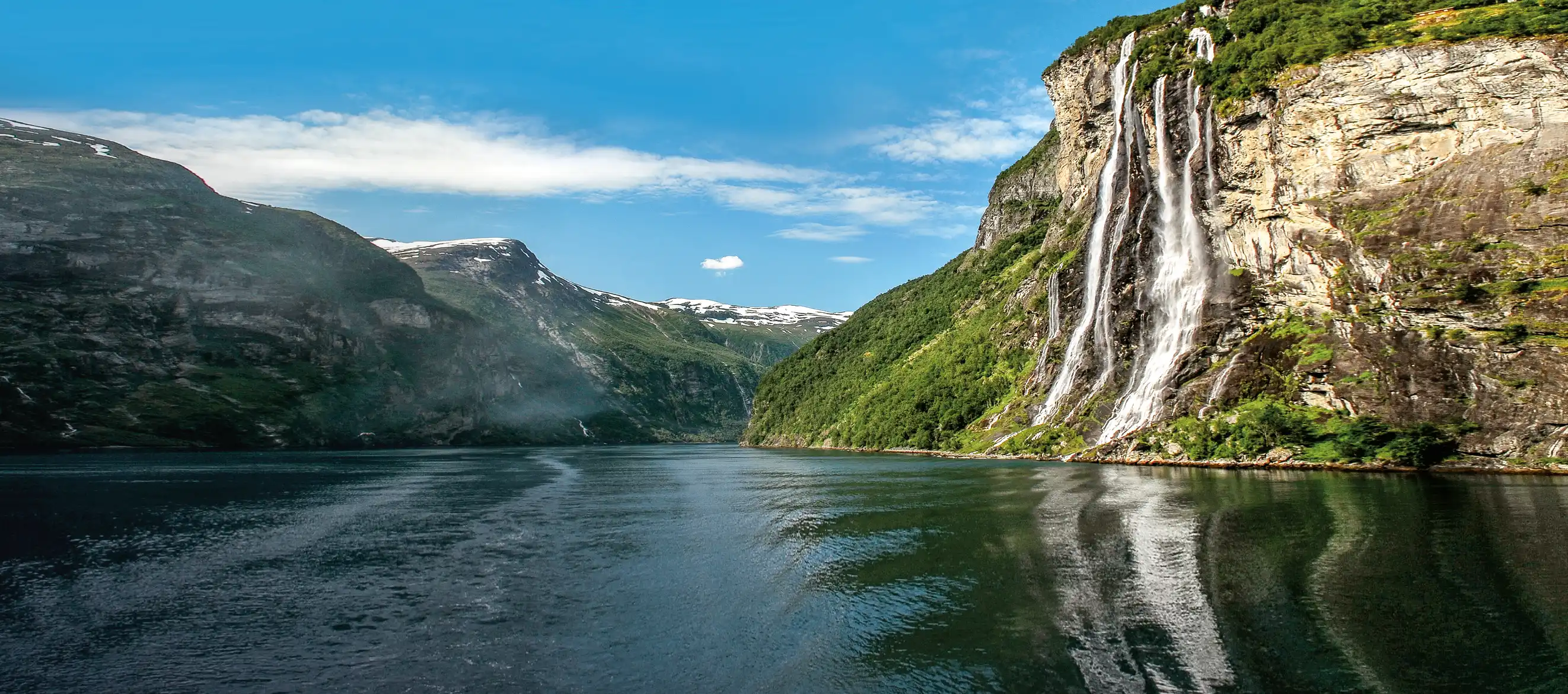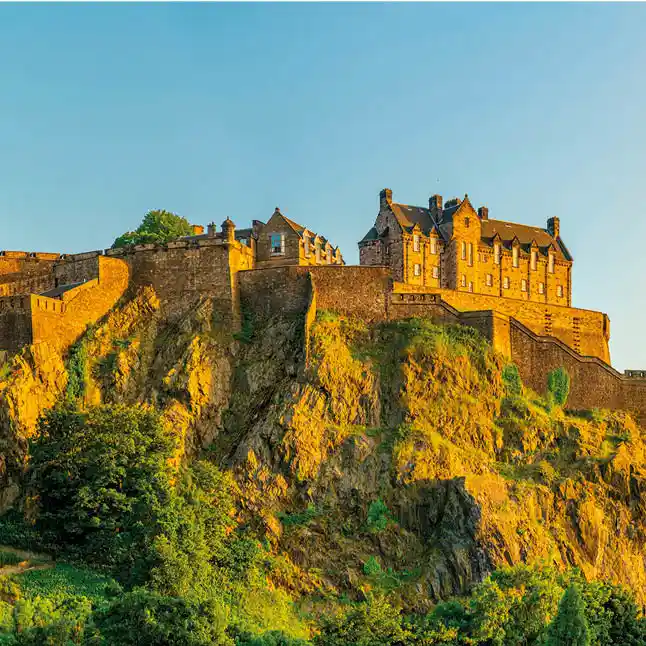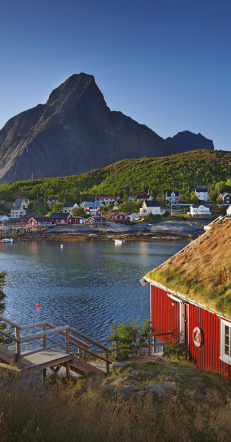- Active glaciers: The Norwegian fjords house several active glaciers, such as the Jostedalsbreen, the largest glacier in Europe. Tourists can take excursions to see these enormous masses of ice up close and learn about their formation and the impact of climate change.
- The rock path of Pulpit Rock: Pulpit Rock (Preikestolen) is one of the most iconic rock formations in Norway, with a platform 604 meters above the Lysefjord. The hike to the top is popular and offers spectacular views, attracting adventurers from all over the world.
- Viking history in Haugesund: Haugesund, known as the "Viking capital," celebrates its rich history through festivals and museums dedicated to this era. Visitors can explore the Viking Center and learn about the life and customs of the Vikings.
- Spectacular waterfalls: The fjords are adorned with numerous waterfalls, such as the famous "Seven Sisters" in Geirangerfjord. These waterfalls fall from vertical cliffs and are an impressive spectacle, especially during the spring thaw.
- Bergen and its fish market: Bergen, known as the gateway to the fjords, houses a famous fish market where visitors can taste fresh seafood and local dishes. It is an ideal place to try cod, salmon, and other seafood products.
- Fjords in winter: Although most tourists visit the fjords in summer, the winter season offers a magical experience.




























